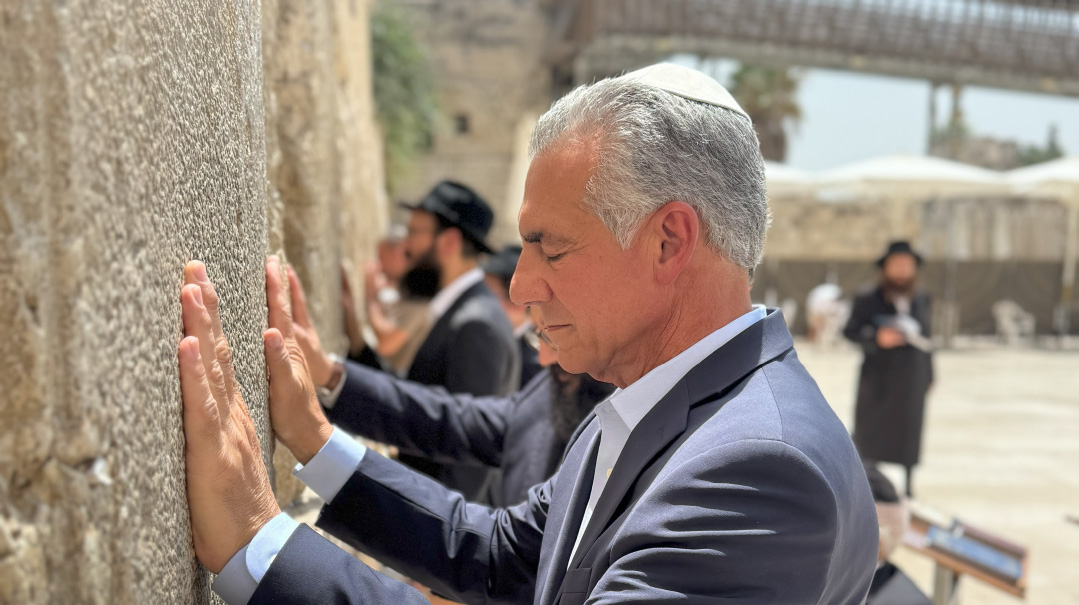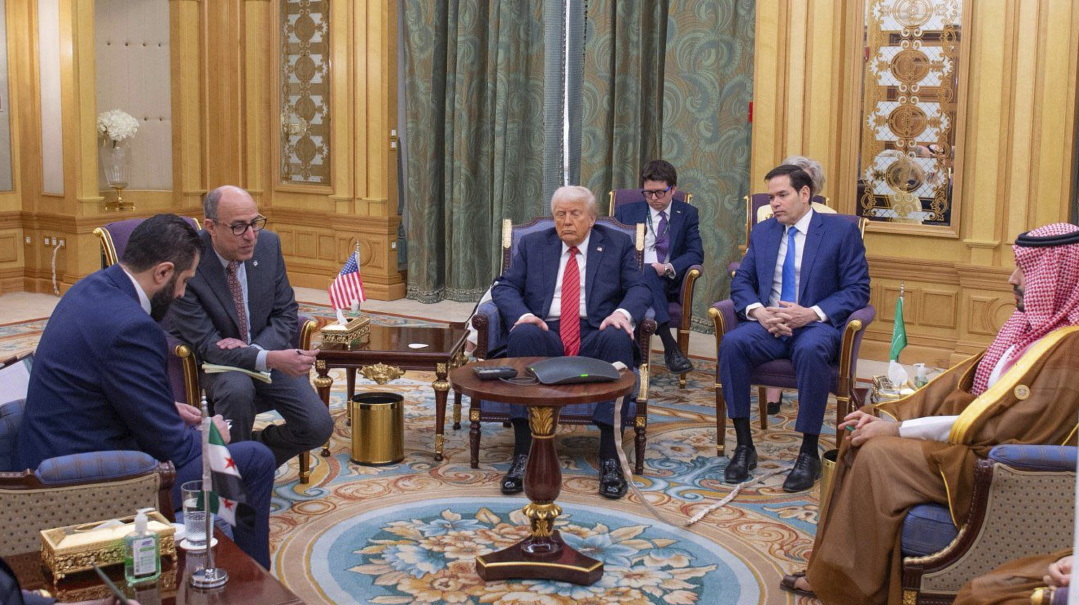Under a Golden Dome: with Prof. Iain Boyd
| June 3, 2025With China and Russia pulling ahead in the hypersonic missile race, is Golden Dome the best way to keep America safe?

Photos: AP Images
President Donald Trump and the Department of Defense recently announced the Golden Domeprogram, an attempt to develop an integrated missile defense system to meet curent threats. While the United States has long had several sophisticated air defenses in place, most experts agree that China and Russia have pulled ahead in the hypersonic missile race, which has left American systems outdated and the nation vulnerable to attack.
Nevertheless, some skeptics are questioning the cost, necessity, andfeasibility of such an undertaking.
Professor Iain Boyd knows something about those issues. Professor Boyd serves as director of the Center for National Security Initiatives and teaches aerospace engineering sciences at the University of Colorado in Boulder. He has taken a lead role in developing defense technology for the United States military and space program.
Professor Boyd shared his insights on Golden Dome with Mishpacha about what the program would do, why it is needed, and how achievable its goals are.
What are America’s present missile defenses and how equipped are they to deal with current threats?
America has very good capabilities against Cold War–era missile threats, which mostly focus on intercontinental ballistic missiles (ICBMs). Those were designed to travel thousands of miles and inflict the kind of Armageddon situations associated with nuclear attacks.
But over the last ten to 20 years, several countries have been developing hypersonic missiles, which are really the next generation in missile technology. China sent one around the world, but they can also be used for shorter-range attacks. Russia has used some hypersonic missiles against Ukraine.
Some of these threats can be addressed with existing defenses like the Patriot system and others the US has in place, but a significant gap has emerged.
Why do hypersonic missiles challenge present defense systems?
They travel very fast, but that alone is not the core challenge, since we have technology to deal with fast-moving ICBMs. A core problem is the region of the atmosphere they fly in. It’s below space, and above where airplanes fly. It’s in between, and our defensive systems are not designed to look there.
The other issue is that they are maneuverable. ICBMs fly like a cannonball, so it’s relatively easy to predict where they’re going. Hypersonic missiles can change trajectory as they fly, which means they must be tracked all the way through their flight. The system of sensors we have now is not designed to do that.
Why did American missile defense fall behind?
You could call it a dividend from the end of the Cold War, when it seemed like it wasn’t necessary to further develop these types of capabilities anymore. Funding got allocated for other things. It isn’t that this money wasn’t used on defense — a lot went to the war on terrorism, which was accurately seen as a more present threat than long-range missile defense.
How would Golden Dome fill the missile defense gap?
The Golden Dome system would be a layered approach. You have sensors spread out, some on satellites in space, some on the ground, some on ships, some could be on airplanes. That geographically distributed constellation of detection would be equipped not only to pick up a launch, but to continuously track the missile and activate interceptors. The interceptor missiles set up to disable offensive missiles would also be distributed over several locations around the world, protecting American interests, and maybe the interests of key allies.
Building it is mostly a systems engineering challenge. Keeping track of the high volume of necessary data is beyond what a human mind can do. It takes very advanced computer systems and AI technology to design a system that will hand off tracking and activation from one sensor to the other.
Does America’s reduced industrial capacity and the amount of weaponry sent abroad in recent years set back attempts to build effective missile defense?
The military industrial base has become degraded, which is also, to a certain extent, a result of shifting priorities after the Cold War.
More broadly, you could say that since then, America’s weapons’ magazine across the board is lower than in probably should be. That makes building Golden Dome more challenging, because if we’re short on missiles, where are the interceptors going to come from?
The White House has suggested that Golden Dome will cost $175 billion. How realistic does that sound?
A lot of the money will need to go into putting satellites and sensors into space. It’s very difficult to predict what that will cost. The White House estimate doesn’t necessarily sound inaccurate, but it could also be half or double that.
Do present threats from adversaries justify the expenditure necessary for Golden Dome?
China has spent the equivalent of hundreds of billions of dollars to build up its hypersonic arsenal. They regularly parade the missiles through Tiananmen Square, and it’s fair to assume they are part of any war plan they have.
If a war occurs, it is likely that some of those Chinese hypersonic weapons will get through our present defenses.
If the US decides it doesn’t want to spend the money it takes to protect itself against that threat, it’s at a major disadvantage in any meeting with China at the negotiating table. That’s especially true if we want to demand some sort of arms control. Saying “please get rid of your weapons” isn’t going to work.
It’s not only about China. Russia used hypersonic missiles against Ukraine. Iran might have some hypersonic capacities, and North Korea is working on them.
Are there lessons learned from Iron Dome that will be helpful in designing the Golden Dome?
There are certainly lessons learned. Israel is a much smaller country, but their Iron Dome system still has to coordinate sensors and interceptors on different fronts, and in very short time frames.
The difference is in scale. Obviously, the US has a much larger land mass to protect. And missile threats to the United States could pretty much come from 360 degrees around, so the job of coordinating the defensive system becomes far more challenging. It’s sort of like Iron Dome multiplied by some large number.
What role would the center you lead play in developing Golden Dome?
The Department of Defense funds some research here at the university to develop computational models that can predict the trajectory and targets of missiles. That technology is part of what would be used to design and operate the new sensor systems.
President Trump expressed a desire to complete Golden Dome before the end of his term. Do you think that is achievable?
A lot of progress can be made in three and half years, but I don’t think a fully operational Golden Dome system will be in place by then. The space layer especially will take time to build and launch.
It is important, though, to have ambitious timeframes. Given that America’s adversaries already have hypersonic missiles in place, there’s some urgency to it.
(Originally featured in Mishpacha, Issue 1064)
Oops! We could not locate your form.







